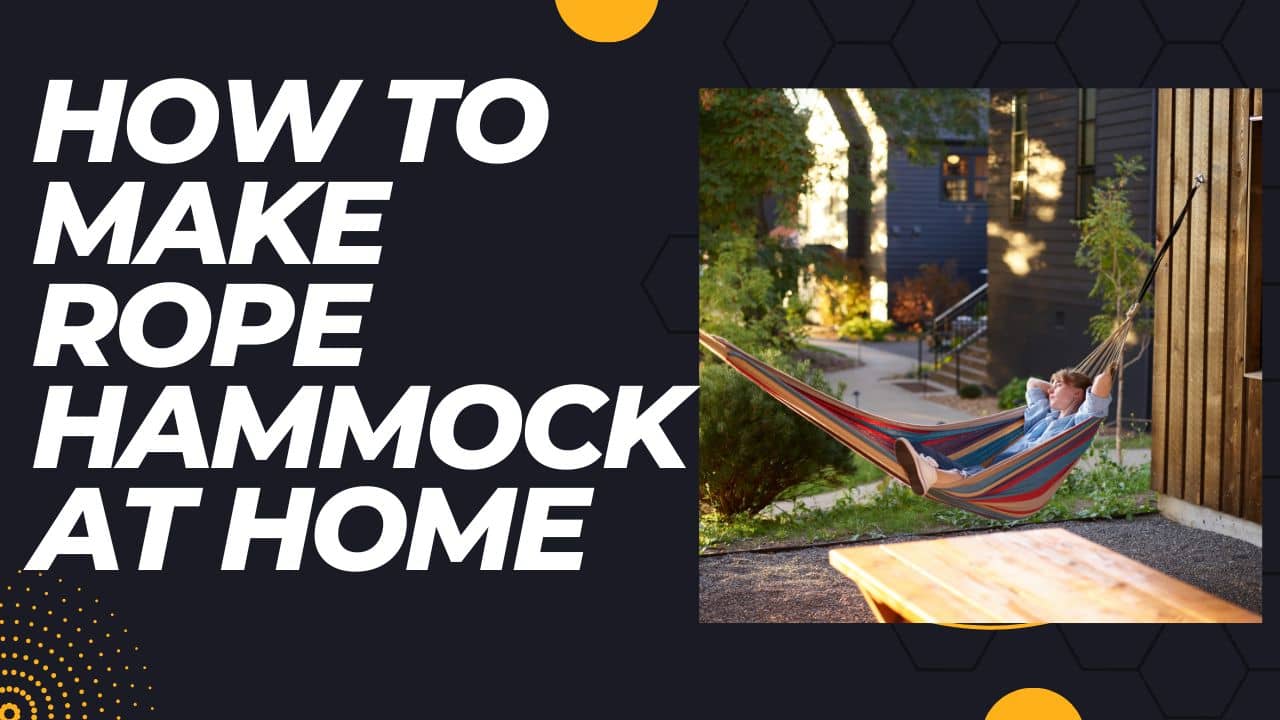Are you looking for a fun and creative DIY project to take on at home? Look no further than making your very own rope hammock! Not only is it a relaxing and comfortable addition to your backyard or patio, but it’s also easy to make with just a few materials and tools. In this tutorial, we’ll walk you through the step-by-step process of creating your own rope hammock, so you can kick back and enjoy the warm weather in style. how to do it:
- Gather the materials you will need to make your rope hammock
- This includes rope, fabric, and a sewing machine
- Cut the fabric into two rectangles, each measuring approximately 6 feet by 4 feet
- Fold each rectangle in half lengthwise, then Sew the long sides of both fabric rectangles together with a sewing machine
- Cut two lengths of rope, each measuring about 12 feet long
- Tie one end of each length of rope to one corner of the sewn fabric rectangle
- Hang your newly made rope hammock from two trees or other sturdy supports using the remaining length of rope attached to the other corners of the fabric rectangle
How to Make a Hammock – Step by Step Instructions
How Do You Make a Rope Hammock Step by Step?
If you’re looking for a relaxing way to spend an afternoon, consider making your own rope hammock. With just a few supplies and some basic knot-tying skills, you can create a comfortable hammock. Here’s how to do it.
- Gather Materials: You will need a roll of cotton or polyester rope, two metal or wooden rings, and a pair of scissors or a knife.
- Measure Rope: Measure out the length of rope you will need for your hammock. The length will depend on the size of the hammock you want to make, but a good rule of thumb is to use about 12-15 feet of rope for every foot of hammock width.
- Cut Rope: Cut the rope to the desired length using scissors or a knife.
- Make Loops: Make a loop at each end of the rope by tying a double knot. The loops should be about 6 inches long.
- Attach Rings: Slip the loops onto the metal or wooden rings. Make sure the rings are securely attached to the loops.
- Tie Rope to Trees or Posts: Find two trees or posts that are the correct distance apart to fit your hammock. Tie the rings to the trees or posts using a figure-eight knot or a bowline knot.
- Test the Hammock: Before sitting in the hammock, make sure the knots are tight and the ropes are secure. Sit in the hammock and make any necessary adjustments before use.
- Enjoy Your New Hammock: Now that your hammock is complete, kick back and enjoy the warm weather in style!
Note: The instructions are general guide, if you are not familiar with knots, it is recommended to research the knots thoroughly and practice them before starting the project.
How Do You Make a Homemade Hammock?
There are a few things you will need in order to make a homemade hammock. For the fabric, you will need about 4 yards of cotton or nylon fabric that is 45 inches wide. You will also need two dowels that are each 6 feet long, and some heavy-duty thread.
First, fold the fabric in half lengthwise and then sew the two long sides together with a sewing machine. Next, cut eight 12-inch pieces of heavy-duty thread and tie them evenly around the sewn tube of fabric. These will be used to attach the dowels later on.
Now it’s time to insert the dowels. On each end of the tube of fabric, fold over about an inch and a half and then insert one dowel so that about 6 inches is sticking out on either side. Once both dowels are inserted, take the eight pieces of thread that were earlier tied around the tube and use them to tie each dowel securely in place.
Your hammock is now complete! To hang it, simply find two trees or posts that are about 15 feet apart from each other and tie each end of the hammock onto them using rope or another type of sturdy cord. And there you have it – your very own homemade hammock!
What Kind of Rope Do You Use to Make a Hammock?
When it comes to choosing the right rope for your hammock, there are a few things you need to take into consideration. The most important factor is the weight capacity of the rope. You also need to consider the length and thickness of the rope.
The weight capacity is determined by the type of fiber used in the rope as well as its breaking strength. For example, polyester has a higher breaking strength than nylon. This means that it can support more weight before it breaks.
However, polyester is also more expensive than nylon.
As far as length goes, you’ll need to decide how long you want your hammock to be. The average hammock is between 9 and 10 feet long.
If you want a longer hammock, you’ll need to use a thicker rope so that it can support the extra weight.
Finally, you need to choose a thickness for your rope. The thicker the rope, the stronger it will be and the more weight it will be able to support.
However, thicker ropes are also heavier and more difficult to tie knots in. For most people, a 3/8 inch rope is thick enough.
How Much Rope is Needed to Make a Hammock?
Assuming you would like the dimensions of a standard hammock, here are the requirements: -For a single person hammock, you will need about 10-12 feet of rope. -For a double person hammock, you will need about 15-18 feet of rope.
The width of the fabric will also affect how much rope is needed. A wider hammock will need more rope than a narrower one. The type of weave and fabric also makes a difference.
A looser weave requires more rope than a tighter weave.
Conclusion
“Congratulations! You’ve just made your very own rope hammock. Not only did you save money by making it yourself, but you also have the satisfaction of knowing you created something with your own hands. This hammock is the perfect addition to any backyard or patio, providing a comfortable and relaxing spot to kick back and enjoy the warm weather. Whether you’re reading a book, taking a nap, or spending time with friends and family, your new hammock is sure to be a hit. So go ahead, grab a cold drink and relax in your new homemade hammock.
Happy lounging!”
Our latest posts

